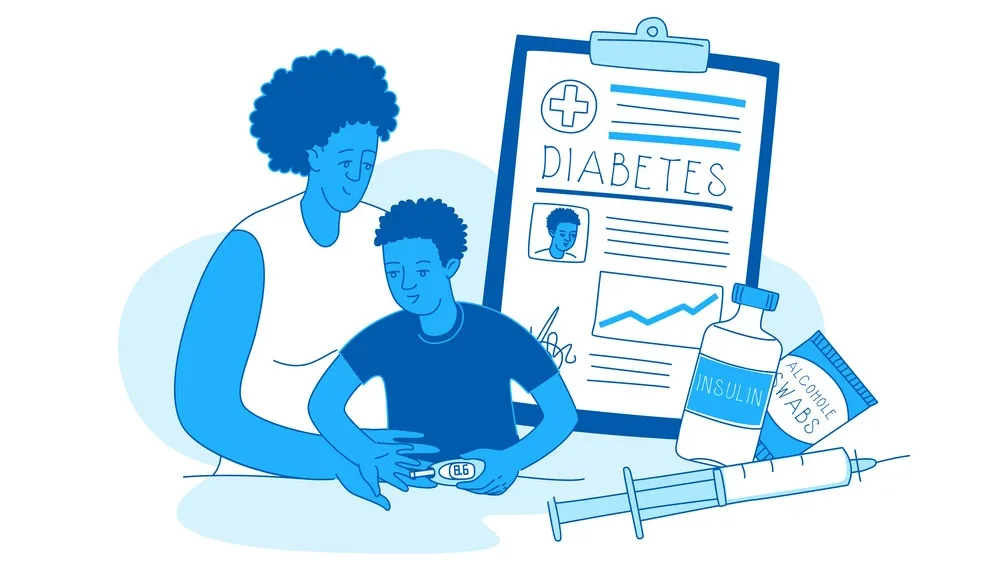Diabetes treatment: Using insulin to manage blood sugar
Houston Endocrine Center2022-12-10T13:02:53+00:00
Diabetes is a chronic disease when the pancreas doesn’t produce enough insulin, or the body can’t use insulin properly. It’s a lifelong condition that needs to be managed. The goal of diabetes treatment is to control your blood glucose levels, so they don’t cause problems with your health and daily life. In this article, we will discuss Diabetes treatment: Using insulin to manage blood sugar.
Managing diabetes with insulin

Insulin is a hormone made by the pancreas. It helps your body use glucose (sugar) for energy. When you are diabetic, your pancreas doesn’t make insulin, or your body can’t use it properly. Without insulin, sugar builds up and causes serious health problems.
The good news is that some medications help with this problem, including one called metformin, which helps control blood sugar levels and can be used alone or with other medications (such as sulfonylureas).
How does insulin work?

You’ve probably heard that insulin is a hormone and that the pancreas produces it. The pancreas is an organ located just behind your stomach. The “insulin hormone” does exactly what it says: it lowers blood sugar levels by helping glucose enter cells.
Insulin works by signaling fat, muscle, and liver cells to take glucose from the bloodstream. This process helps keep blood sugar levels steady between meals or fasting times when you do not eat for several hours or more at night before bedtime (going to sleep).
When someone has diabetes mellitus type 2, their bodies do not produce enough insulin to compensate for all the glucose entering their bloodstream after eating carbohydrates such as slices of bread and starchy vegetables like potatoes. Without enough insulin available to move all this excess glucose into our cells effectively, especially fast-twitch muscle fibers that need lots of glycogen precursors like glucose to grow stronger faster!
Types of insulin treatments
Insulin is a hormone that helps our body use glucose. There are many types of insulin treatments, including:
- Long-acting insulins (Lantus, Levemir) are given once or twice a day and last for 20 or 24 hours. They’re used to steady blood sugar levels during fasting periods (when your body isn’t digesting food), such as overnight and between meals.
- Short-acting insulins (Humalog, NovoLog) work more quickly than NPH but only for about eight hours after injection; they’re often used before meals to help control spikes in blood sugar after eating.
- Intermediate-acting insulins work for up to 14 hours after injection; they’re also taken before meals on an ongoing basis to control spikes in blood sugar following eating.
Administration and dosage

The most common way to administer insulin is via injection, either under the skin (subcutaneous) or into a vein (intravenous). The type of injection depends on how much time you got and what your doctor recommends.
You can’t take too much insulin, but you can take too little, so it’s important to be careful about your dosage. For that reason, most people who inject themselves with insulin use an insulin pump instead of syringes. This helps them get the right amount at all times. But even if you don’t use a pump and inject yourself manually, there are still ways you can try to make sure your blood sugar levels stay within range:
Check your blood sugar regularly. When you first start taking insulin, check it four times a day. Once you’ve learned how much of the hormone your body needs to stay healthy, you can reduce this to two or three times per day. Use a glucose meter that shows blood glucose levels and trends over time (often called “continuous glucose monitors”).
Choose the right method for injecting insulin.
To use insulin injections, you must determine the best delivery method. There are several ways that insulin can be injected into your body:
- Insulin pen
- Syringe (with a needle)
- Insulin pump
- Needleless injection device
Ways to manage blood glucose levels

Here are some ways to manage your blood glucose levels:
- Eat healthy foods.
- Exercise regularly.
- Take your insulin as your doctor prescribes, and check your blood sugar regularly to ensure it stays in the normal range.
- Watch for signs of high or low blood sugar (hyperglycemia or hypoglycemia), such as feeling shaky; feeling hungry even though you just ate; having blurred vision; experiencing heart palpitations; sweating heavily without doing anything active like working out at a gym, dancing vigorously at a club, etc.; urinating more often than usual without drinking extra fluids.
Side effects and reactions
Insulin reactions can vary widely from person to person. Some people get a reaction from the needle, while others react to the insulin itself. Reactions can range in severity and frequency, but some are more common than others.
You might experience:
- A feeling of warmth or flushing after giving yourself an injection
- Dizziness or lightheadedness if you stand up too quickly after administering an injection
- Anxiety about injecting yourself correctly
Conclusion
Insulin is one of the most effective treatments for diabetes. It is a powerful drug that can help regulate your blood sugar levels and keep them within a safe range. If you are struggling with diabetes, talk to your doctor about how insulin can help you manage this disease.
